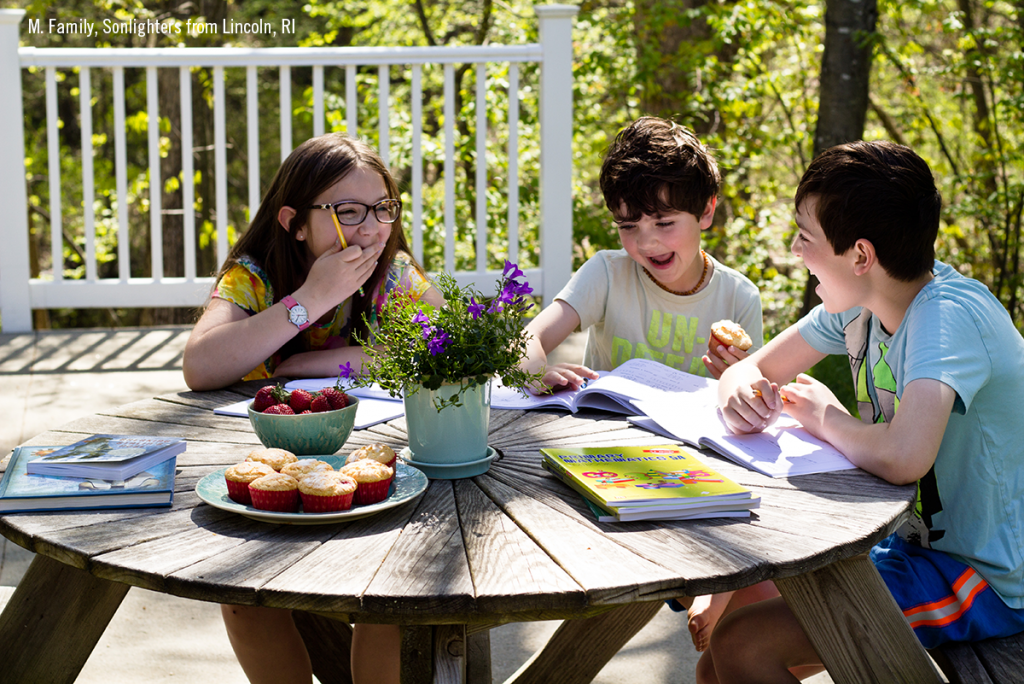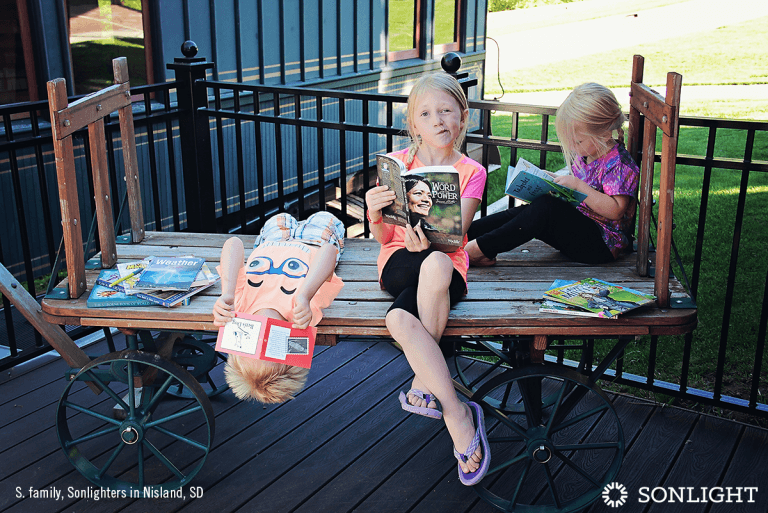
At Sonlight, we love featuring real photos and stories from Sonlight families on the website, in our catalog, and on social media. Your homeschool moments are truly inspiring to the staff here at Sonlight as well as to the entire community of Sonlighters.
Congratulations to Sonlight's Annual Photo Contest Winners!
Thank you so much to everyone who submitted photos and stories in the Annual Photo Contest. The three winning photos have been selected! Each winning family featured below (in no particular order) will receive a $500 gift card to purchase more Sonlight curriculum. One family will be featured on the cover of a Sonlight Catalog.
W. Family, Sonlighters from Dallas, GA

“Thank you, Sonlight, for making this year so fun and easy!” writes Tiffany W of Dallas, GA. “Last year we used a different program and we struggled through it. This year we chose Sonlight and couldn't be happier! The open-and-go aspect really optimized my time as a mother of four (one of whom is a toddler and another a newborn). “I have loved being able to teach both my school-age kids (2nd grade and Kindergarten) from the same HBL. Not only is it a time saver, it's brought them together in a whole new way. I love watching them learn together.”
In this photo Charlie (8) and Millie (6) are thrilled to share their “end of the year, look at all we've accomplished” moment, also called a #sonlightstack.
M. Family, Sonlighters from Lincoln, RI

“A friend who used Sonlight suggested I try the PreK program ‘just to see,’ says Altagail M of Lincoln, RI. “Well, seven years later and homeschooling with Sonlight is the best parenting decision we ever made. I love learning with my children and the opportunities to encourage their natural gifts and strengths without the confines of a traditional classroom. These kids love to read, their attention spans are incredible, and we have enjoyed so much wonderful literature thanks to Sonlight. Time is our most precious commodity and I am so glad not to be missing their childhood.”
In Altagail's winning photo, Lily (9, PreK-HBL F), Gracin (7, PreK-HBL C), and Austin (11, PreK-HBL F) take advantage of a sunny day to homeschool outside.
K. Family, Sonlighters from Vero Beach, FL

“Homeschooling has been one of the best decisions we have made for our family. It has brought our family closer, and has allowed us great adventures together,” writes Sennu K of Vero Beach, FL. “One of my favorite memories this year was a trip to Disney World. On our way there I started reading Seven Daughters and Seven Sons aloud, and we got into the story so much that we ended up staying in our hotel room reading the book into midnight, because we couldn't put it down.”
In this photo, Sennu (Mom), Mae (4, not yet homeschooling) and Abby (12, HBL F) celebrate Abby's last day of sixth grade.
Although Abby (12; HBL F) is the only one currently homeschooling, their four oldest children who have finished homeschool and are all attending colleges, still enjoy taking part in her Read-Alouds, and often take turns reading the books together. “We so love the books Sonlight chooses, and look forward to our next year with HBL G.”
Share Your #sonlightstories Year-Round
Thanks again for making this year's contest a success. Keep sharing your #sonlightstories year-round! We love your Box Day photos, your day to day experiences, and the end-of-the-year #sonlightstack shots of all you've accomplished.
Use the #sonlightstories hashtag when you share on social media. You can also log into your account on sonlight.com anytime to upload both images and testimonials. You never know when something you submitted may appear in a catalog, on our homepage, or on the Sonlight blog














 “I really appreciate how experiential my homeschool education was. I found the ability to learn through a variety of hands-on experiences to be excellent preparation for success in college and beyond. The Sonlight curriculum and scholarship were both very influential in my academic and spiritual growth and development.”
“I really appreciate how experiential my homeschool education was. I found the ability to learn through a variety of hands-on experiences to be excellent preparation for success in college and beyond. The Sonlight curriculum and scholarship were both very influential in my academic and spiritual growth and development.”


